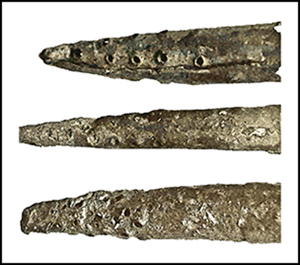Article contents
Party like a Sumerian: reinterpreting the ‘sceptres’ from the Maikop kurgan
Published online by Cambridge University Press: 19 January 2022
Abstract

The Bronze Age Maikop kurgan is one of the most richly furnished prehistoric burial mounds in the northern Caucasus. Its excavation in 1897 yielded a set of gold and silver tubes with elaborate tips and decorative bull figurines. Interpretations of these tubes include their use as sceptres and as poles to support a canopy. Re-examination of these objects, however, suggests they were used as tubes for the communal drinking of beer, with integral filters to remove impurities. If correct, these objects represent the earliest material evidence of drinking through long tubes—a practice that became common during feasts in the third and second millennia BC in the ancient Near East.
Information
- Type
- Research Article
- Information
- Copyright
- Copyright © The Author(s), 2022. Published by Cambridge University Press on behalf of Antiquity Publications Ltd.
References
- 5
- Cited by

